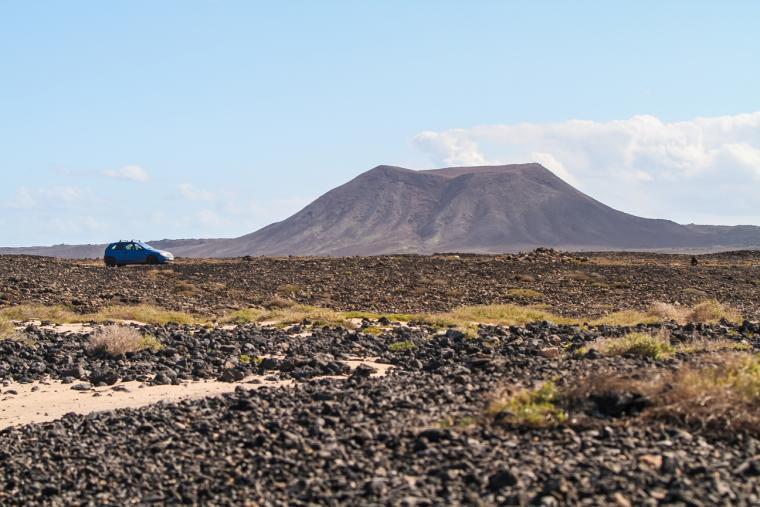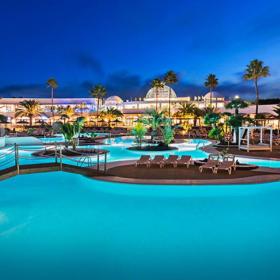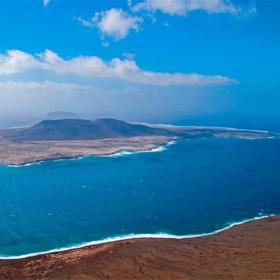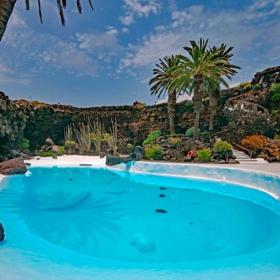Although Lanzarote is an island famous for its volcanic landscapes that look like something from another planet, it also has a very special bond with art, and this bond has a name of its own: César Manrique – considered to be one of the most influential artists of the 20th century.
He was a true visionary who could see that the landscape of Lanzarote gave him a unique opportunity to integrate nature into his artistic projects, turning it into a canvas where nature and art blend in perfect harmony. In fact, its influence is not only visible in his works, but is an inherent part of the island's soul.
However, what really makes the artist's legacy so special is his focus on preserving the natural environment while transforming it into art. Each of his works reflects his deep love for the island, his concern for sustainability and his vision that art should be integrated into natural space rather than competed with.
What can be seen of César Manrique in Lanzarote? Today, at Elba Hotels, we invite you to discover some of the artist’s most important projects.
Who was César Manrique?
César Manrique, born in Arrecife on 24 April 1919, was a renowned painter, sculptor and architect. As a child he grew up among the island's impressive volcanic landscapes, which later inspired many of his works. Although his career began in the sphere of painting, it was in the field of architecture and landscape design that he was most successful.
After studying at the School of Fine Arts in Madrid, in 1964 he went to live in New York, where he immersed himself in the artistic trends of the time, such as pop art and abstract expressionism. However, he decided to return to Lanzarote to create his masterpiece there.
Throughout his life, he received numerous awards for his contribution to art and nature which included the World Prize for Ecology and Tourism (1978).
Main works of César Manrique on Lanzarote
César Manrique's works can be found all over the island. Each of them has a clear purpose: to enhance the natural beauty of the environment, without altering it. Some of the most outstanding are as follows:
Jameos del Agua
Of all César Manrique's projects on Lanzarote, the Jameos del Agua is the most iconic. It is located in the north of Lanzarote, in the municipality of Haría. It is a spectacular volcanic cave that was created when the roof of a lava tube collapsed.
Manrique took advantage of the cave's natural features to create an auditorium, a restaurant and a saltwater lake that blend perfectly into the space, transforming it into a unique cultural centre.
Mirador del Río and its panoramic views
Located on the Famara cliff, the Mirador del Río is another of Manrique's masterpieces, and is currently one of the spots most visited by tourists. It is a place where the artist managed to perfectly integrate the architectural design with the natural surroundings.
It offers picture perfect views of the Chinijo archipelago and the island of La Graciosa. From here you can see the islets of Alegranza, Montaña Clara and Roque del Este.
Cactus Garden
Another of César Manrique's most fascinating creations on Lanzarote is the Cactus Garden, which houses more than a thousand species of cactus from all over the world. It was built in an old volcanic sand quarry in Guatiza.
The artist chose this site specifically because of its volcanic terrain, which is ideal for such exotic flora. But the space was also designed in such a way that each cactus is perfectly placed, creating an almost surreal landscape.
Cueva de los Verdes
The Cueva de los Verdes (Cave of the Greens) is another of Lanzarote's most iconic places which César Manrique transformed into a unique cultural space. Originally, it was a cave formed by the passage of lava, but the artist created an underground route that goes deep into the heart of the cave, allowing visitors to admire the amazing rock formations and the incredible views of the cave.
Monumento al Campesino
The Monumento al Campesino (Monument to the Peasant) is one of César Manrique's finest sculptures on Lanzarote and is a true homage to its people and their connection to the volcanic landscape of the island. It is a group of sculptures that represent the peasants working the land. Today, it is one of the greatest symbols of Lanzarote's identity.
César Manrique's House in Lanzarote
Located in Tahíche, César Manrique's house was the artist's residence for many years. Today it is one of the island's main museums. It is perfectly integrated with the volcanic landscape and its design is a fine example of the artist's style. Inside, it is possible to find out more about Manrique's life and work in spaces he designed himself.
César Manrique Foundation in Tahíche
The César Manrique Foundation is located in the artist's house in Tahíche. It is a space that houses an impressive art collection and whose purpose is to promote the conservation of the environment and respect for nature.
House-Museum in Haría
The House-Museum in Haría is another space that allows you to immerse yourself in the life of the artist, where you can learn more about his later years, when he had already become a key figure in art and nature in the Canary Islands.
Emblematic sculptures by César Manrique on the island
In addition to his architectural works, César Manrique's sculptures on Lanzarote are also very well known. The most famous are known as the ‘Juguetes del Viento’ (Wind Toys) which are mobile sculptures that interact with the natural environment. They can be found in different parts of the island and their movement contributes to enhancing the beauty and exoticism of the Lanzarote landscape.
In summary, César Manrique not only transformed Lanzarote through his art, but also turned it into an extension of his creativity. He has left us an infinite number of works that today continue to be a living testimony to the immense love he felt for his native island.





